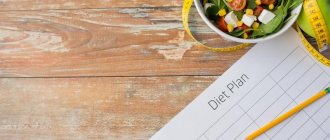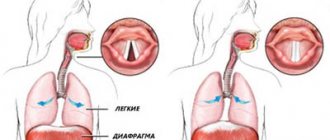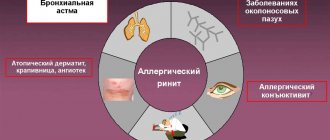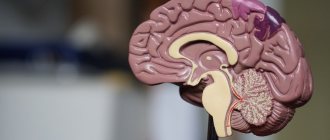Bariatric surgery is the most effective treatment for obesity and related diseases. However, if you do not follow the principles of proper nutrition after bariatric surgery, then all the doctor’s efforts may be in vain.
At first, changing long-standing eating habits can be difficult. To get into excellent physical shape, you will need to be persistent and follow all the doctor’s instructions. Specialists of the Federal Scientific and Clinical Center FMBA are ready to provide professional assistance to each patient at any stage of treatment.
Starting 5 weeks after surgery, you can switch to a “soft” diet
This means that new foods can be added to your existing diet. This diet is called “soft” because all foods consumed must be prepared in such a way that you can easily mash them with a fork. If you have enough protein in your diet (more than 90g), you can add chopped fruits and vegetables. As a result of cooking, the vegetables should have a soft consistency. You can also include ripe, peeled fruits in your diet. It is prohibited to consume fruits canned in syrup, sweet fruit juices, as well as vegetables cooked in vegetable oil or butter.
PROHIBITED PRODUCTS
- Milk with more than 2% fat content
- Butter, margarine, vegetable oil, mayonnaise
- Ice cream
- Cakes, pastries, sweets
- Sausages, lard
- fried food
- Sweet drinks
- Carbonated drinks
- Alcohol
AUTHORIZED PRODUCTS
- Tuna and chicken canned in their own juice
- Lean turkey meat
- Chicken meat without skin
- Lean pork or beef, steamed and shredded
- Beaten or boiled eggs
- Baked or boiled fish and seafood
- Tofu
- Beans and lentils
- Low-fat or low-calorie cottage cheese, mozzarella or ricotta cheese
- Yogurt
If your diet contains more than 90 g of protein per day, you can add:
- Vegetables without peel
- Ripe fruit without peel
- Fruits canned in their own juice
- Low calorie soups
Beverages:
- 1% or skim milk
- Water
- Decaf coffee and tea
- Other unsweetened drinks
High protein foods recommended for consumption
| PRODUCT | A PORTION | CALORIES | PROTEIN CONTENT, g. |
| Baked or canned beans | ¼ cup | 62 | 3,5 |
| Beef, tenderloin | 30 g | 48 | 7 |
| Beef, loin | 30 g | 59 | 7 |
| Cottage cheese 1% fat | ¼ cup | 41 | 7 |
| Cream cheese | ¼ cup | 55 | 6,7 |
| Parmesan cheese | ¼ cup | 128 | 12 |
| Mozzarella cheese | 30 g | 78 | 8 |
| Ricotta cheese | ¼ cup | 90 | 8 |
| Chicken breast without skin | 30 g | 46 | 9 |
| Chicken's leg | 30 g | 54 | 7 |
| Cod, baked | 30 g | 30 | 7 |
| Steamed crab | 30 g | 27 | 6 |
| Egg | 1 PC | 78 | 6 |
| Flounder | 30 g | 21 | 7 |
| Halibut | 30 g | 40 | 7 |
| Lean ham | 30 g | 44 | 7 |
| Steamed lobster | 30 g | 26 | 5 |
| Milk 1% fat | ½ cup | 43 | 4 |
| Pork, tenderloin | 30 g | 47 | 6 |
| Pork, loin | 30 g | 57 | 7 |
| Salmon, baked | 30 g | 52 | 7 |
| Steamed shrimp | 30 g | 28 | 6 |
| Steak, fillet | 30 g | 55 | 9 |
| Tofu | ¼ cup | 55 | 9 |
| Tuna canned in its own juice | 30 g | 37 | 8 |
| Turkey, white meat | 30 g | 35 | 7 |
| Veal, loin | 30 g | 50 | 7 |
| Yogurt | ½ cup | 60 | 5,5 |
Monitoring the most common problems
The following describes common problems that occur after gastrectomy surgery. Keeping a log of the foods you eat and writing down any symptoms or problems you experience will help you understand why these problems occur. You can use the form for recording the consumed foods and drinks, which is given at the end of this material.
If the tips below don't help you, talk to a clinical dietitian dietitian or your doctor.
Tips for controlling nausea
- Avoid eating heavy, spicy and fatty foods.
- Don't eat or drink too quickly. Try putting your fork down before taking another bite from your plate.
- Don't eat or drink too much at one meal.
- Do not lie horizontally after eating. Wait 2-3 hours before going to bed.
Tips for controlling overeating
- Don't eat or drink too much at one time.
- Don't drink too much liquid during meals.
- Don't eat or drink too quickly. Try putting your fork down before taking another bite from your plate. The signal that you are full reaches your brain only after 20 minutes.
- If you are having trouble switching to 6 small meals instead of 3 main meals, create a meal plan with fixed eating and drinking times.
- If you notice that your portions are back to being as large as they were before surgery, try preparing your meals in mini portions or pre-dividing them into ready-to-use portions.
- Avoid drinking carbonated drinks (such as soda and mineral water).
- Avoid vegetables that can cause gas (such as broccoli, cauliflower, cabbage, Brussels sprouts, onions, and legumes).
Tips to Prevent Diarrhea
- First of all, try to eat less sugar. Also try eating less dairy products. Lastly, don't eat a lot of fatty foods. Notice if the diarrhea goes away when you limit your intake of one of these ingredients. If so, consume such foods in smaller quantities.
- Avoid sugar alcohols such as sorbitol and mannitol. They are often found in chewing gum, candy, cough suppressants, dairy desserts, frostings, cakes and cookies. To find out if a product contains these ingredients, check its ingredients. You can use sweeteners such as NutraSweet® or Equal®.
- Try to eat foods that contain soluble fiber, such as canned fruit, bananas, peanut butter and oatmeal.
- Make sure you store food properly at home. Immediately put leftover food in the refrigerator or freezer.
- After 2 days, throw away any unused leftovers stored in the refrigerator.
- After 6 months, throw away frozen leftovers.
- Defrost leftover food in the refrigerator or microwave rather than just on the kitchen counter. Heat it to a safe temperature for consumption when the food begins to steam.
to come back to the beginning
Two months later
Task: do not irritate the digestive tract, focus on protein foods that dilute bile.
If recovery proceeds normally, there is no pain or discomfort, then you can gradually expand your diet, however, avoiding foods from the “absolute prohibition list.”
It is better to eat vegetable soups or with lean chicken broth, but without frying onions and carrots. You can add half a teaspoon of melted butter or olive oil to the finished soup.
Boiled meat of tender and lean varieties is acceptable. Prepare a side dish without frying - it can be boiled or steamed carrots, pumpkin, squash, zucchini, cauliflower, beets. It’s good to add greens to them.
For dinner, boiled or stewed fish with a little oil is suitable - cod or catfish. Garnish with boiled potatoes; young and freshly cooked ones are especially good. You can make jellied fish, but do not fill it with too concentrated broth: dilute the broth with vegetable broth on gelatin. Boiled squid, shrimp and mussels are also good - they contain easily digestible protein, which is necessary at this time.
Low-fat cottage cheese is also useful for dinner, preferably in the form of a casserole. Such protein dishes make bile thinner. The best dessert at this time is baked apple, apple marshmallow and marmalade.
Recipe of the day. Veal in whey
Soak fresh veal overnight in whey. In the morning, cut into pieces and cook in the oven or in a dry frying pan, without oil, over low heat so that there is no brown crust.
What to avoid
There are a number of dietary restrictions that must be adhered to after bone grafting, especially at first. First of all, you should exclude from the diet everything that has a bad effect on the tone of the vascular wall and can contribute to the development of bleeding in the postoperative period, namely:
- Coffee, strong black tea;
- Alcoholic drinks;
- Nicotine;
It is especially important to exclude the above drinks and cigarettes in the first two to three days after the intervention. This is explained by the fact that in the early postoperative period the inflammatory reaction is most pronounced, and there is no need to create additional stress on the blood vessels. In addition, hot, spicy foods and carbonated drinks should be excluded from the diet.
All of them have an irritating effect on the oral mucosa and contribute to increased discomfort in the postoperative period and slow down the tissue healing process. As for the consistency of food, strict restrictions are relevant only in the early postoperative period (the first 7-10 days). It is necessary to exclude coarse, fibrous, hard foods that require heavy chewing loads.
Gymnastics for the abdomen
Many who have undergone removal of the gallbladder are recommended to do special exercises to improve the functioning of the digestive system - after one and a half to two months if there was an abdominal operation, and a month after endoscopic surgery. Exercises are needed to strengthen the abdominal muscles.
>> Standing, feet shoulder-width apart, hands on your waist, carefully turn your torso to the right and left in turn. The stomach will stretch a little, but you should feel what the optimal amplitude is.
>> Then lie down on the floor, bend your knees, take a deep breath and bend your knees in one direction or the other. It is useful to place a 200-300 gram bag of sand on the upper abdomen and, as you exhale, lift it higher, and while inhaling, lower it. The same should be done with the bag placed on the lower abdomen.
Resources
MSK Support Services
Integrative Medicine Service 646-888-0800 www.mskcc.org/integrative-medicine Our Integrative Medicine Service offers a variety of services to complement traditional medical care. These include music therapy, mind/body therapy, dance and movement therapy, yoga and touch therapy. She also offers nutrition counseling and dietary supplements.
Resources for Life After Cancer [RLAC] Program 646-888-8016 At MSK, patient care does not end when active treatment is completed. The Resources for Living After Cancer (RLAC) program is designed for patients who have completed their treatment and their families. This program offers a variety of services, such as seminars, workshops, support groups, and counseling regarding life after treatment. She also helps resolve issues related to health insurance and employment.
External resources
Academy of Nutrition and Dietetics (AND) www.eatright.org/public AND is the professional organization for registered dietitians. The website provides information on the latest nutrition recommendations and research. There you can also find a nutritionist near your place of residence. The Academy also publishes The Complete Food and Nutrition Guide, which provides more than 600 pages of information on food, nutrition, and human health.
American Institute for Cancer Research www.aicr.org 800-843-8114 Provides nutrition and cancer prevention research information and educational materials.
FDA Center for Food Safety and Applied Nutrition www.fda.gov/AboutFDA/CentersOffices/OfficeofFoods/CFSAN/default.htm Provides useful information on food safety.
to come back to the beginning
Eating in restaurants and during social events
At many social events, food takes center stage. Remember that portions at various events and restaurants can be quite large. It usually takes time to get used to eating out at restaurants or attending events such as weddings and dinner parties.
- If you've managed the appetizer, you may find that you need to take the main course with you.
- If you miss an appetizer, try eating only half of your main course and take the rest with you. You can also share the main dish with a friend.
- You may have to choose between a small portion of soup or a drink to stay within your liquid limit. Or you can take just a few small sips of both.
- If you want to grab dessert, you can take it with you and save it for later.
to come back to the beginning
Nutrition after healing of injured tissues
After the inflammation and swelling disappear and your stitches are removed, you can diversify your diet. It is also better to give preference to mild, warm food, but instead of using a blender, you can finely chop meat or vegetables. The meat should be soft, so it is better to avoid tough beef or pork. It is also better to stew or steam vegetables to make them easier to chew.
It is necessary to chew on the side opposite to the operation area. You should not eat hard foods such as nuts, crackers, raw carrots and others. The diet should be varied and serve as a source of vitamins and microelements. As the bone regenerates, it must be gradually accustomed to chewing loads. The dentist will tell you when and how to do this.
Tracking food and fluid intake
After gastrectomy surgery, you may feel fuller more quickly or have other changes that affect your food intake. Keeping a log of the foods and drinks you consume will help you understand which foods and portion sizes are best for you. It will also make sure you are getting enough calories.
In the journal of consumed foods and drinks:
- record all foods eaten and liquids drunk. Record: the time you eat or drink;
- quantity (portion) and type of product or drink;
- the number of calories in a product or drink;
- Do you feel like you've eaten too much?
Below is an example of a food and beverage log. There is also a blank journal form at the end of this material that you can use.
| Time | Serving Size | Description | Calories | Presence of symptoms |
| 7:00 | 4 oz (120 ml) | Apple juice | 60 | No |
| 8:00 | 1 extra large jumbo egg 5 oz (150 ml) | Scrambled eggs Mashed potatoes | 100 160 | No |
| 10:00 | 6 oz (180 ml) | Yogurt | 105 | No |
| 14:00 | 5 oz (150 ml) 4 oz (120 ml) | Mashed Potatoes Vanilla Pudding | 160 110 | No |
| 16:00 | 1 very large egg (jumbo) | Scrambled eggs | 100 | No |
| 18:00 | 6 oz (180 ml) 5 oz (150 ml) ¼ cup ¼ cup | Mashed Potatoes Boiled Butternut Squash Stewed Chicken Gravy | 192 75 58 50 | Extremely full, unable to finish eating |
| Daily intake 1130 calories |
Weight tracking
It is also very important to monitor your weight. Weigh yourself every 3-5 days. It is advisable to weigh yourself at the same time of day each time. Make sure you wear the same amount of clothing each time. If you notice that you are losing weight, make an outpatient follow-up appointment with a clinical dietitian dietitian.
Determining the quantity of products
To accurately measure food quantities, use measuring spoons, measuring cups or food scales. You can also use the guidelines shown in Figure 1 to roughly determine the quantities of certain products.
Figure 1. Guidelines for determining portion sizes
Finding Calorie Information
Information about the calorie content of packaged products is provided on the label, in the nutritional value table (see Figure 2).
If a food does not have a nutrition label, you can find calorie information on nutrition websites such as CalorieKing.com or MyFitnessPal.com. You can also download the MyFitnessPal app on your smartphone.
Figure 2. Where to look for calorie information on the Nutrition Facts label.
to come back to the beginning
What diseases can cause removal of the uterus
For normal functioning of the uterus, a woman must have hormonal balance. After the removal of an organ, a woman’s metabolic processes in the body are disrupted, and the main thing during this period is to normalize them, restore hormonal levels and increase the ability to recover so that the sutures heal as quickly as possible.
There are many reasons why a woman may have an organ removed:
- oncology;
- myoma;
- endometriosis;
- pelvic inflammatory diseases.
In any of these cases, diet becomes a “lifeline” for quick and high-quality restoration of the female body. Serious interference with the reproductive system has a negative impact on physical and emotional health. Therefore, a woman needs to survive this condition more gently, replenishing her diet with the necessary elements to improve her overall health.
Diso Nutrimoon
Protein for treatment and rehabilitation
An easily digestible, tasteless protein mixture, a source of proteins and amino acids necessary for the body to fight illness, recover from injuries, illnesses and operations.
More details
The carbohydrate content is reduced to 300-320 grams due to easily digestible (simple) carbohydrates, the consumption of which can result in dumping syndrome, manifested by weakness, palpitations, chills, a feeling of heat, pain and bloating, and diarrhea. In this case, foods containing sugar are completely excluded from the diet.
How does the gastrointestinal tract function after gastric resection?
The stomach takes part in hematopoiesis; the cells of the gastric mucosa produce intrinsic Castle factor, an enzyme that converts vitamin B12 from food into an absorbable form. Without intrinsic factor, vitamin B12 is not absorbed and does not enter the bloodstream, but is excreted in the feces. The source of vitamin B12 is animal food; there are no plant sources of B12. For more information about B12 deficiency anemia, read the article in the healthy lifestyle “Red vitamin and anemia (if blood is on a fast ration)” or on the website.
The first blow from food intake is the intestines, primarily the small intestine - this is the most extensive organ of the human digestive system. In it, under the influence of pancreatic enzymes and bile of intestinal juice, the main processes of digestion occur, transforming food into simple components that can be absorbed by the body, determine the state of metabolic processes and, ultimately, human health.
Pancreas. It produces 1.5-2.0 liters of pancreatic juice, which has a pH of 7.5. The main part of pancreatic juice is pancreatic enzymes (trypsin, chymotrypsin, elastase, carboxypeptidases, pancreatic lipase, phospholipases, etc.) Pancreatic juice contains a huge range of enzymes that digest almost all components (macronutrients) of food consumed by humans. These enzymes are produced only in the pancreas. In practice, the pancreas takes over the functions of the stomach in digesting protein foods.
Large intestine - carries out residual final digestion of food, secretion and absorption of water, electrolytes, gases, formation and evacuation of feces.
An important role is played by intestinal microflora, the enzymes of which utilize digestive enzymes secreted by the digestive organs. The breakdown products of enzymes and bile acids are absorbed into the blood and returned to the digestive organs for the re-synthesis of digestive enzymes and acids.











